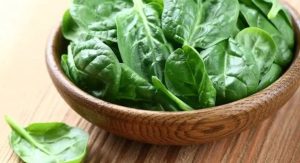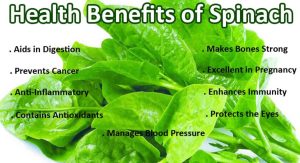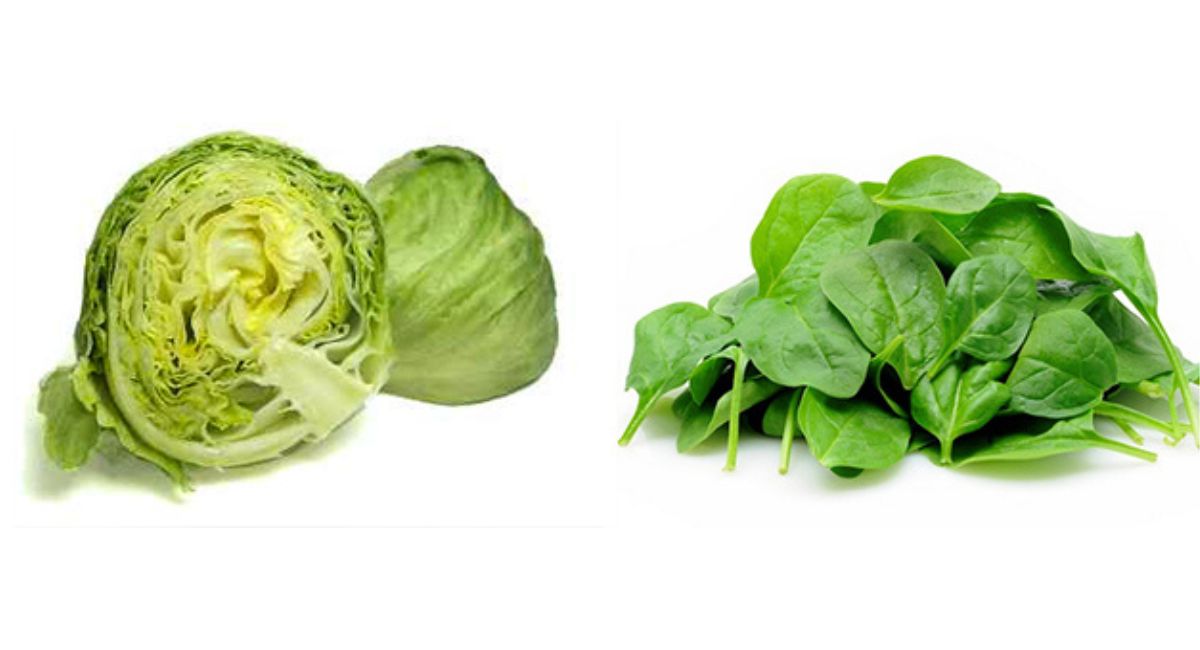Introduction — The Salad Dilemma We’ve All Faced
You’ve probably been here before: standing in the produce aisle, staring at that fresh green display. On one side, you’ve got crisp, familiar lettuce — cool, crunchy, and perfect for a classic salad. On the other, vibrant bunches of spinach — darker, richer, and somehow more “serious” looking, making you wonder, is spinach better than lettuce for your next meal?
You’re wondering: Which one should I choose? Is spinach actually better than lettuce?
The answer isn’t as straightforward as “yes” or “no.” It depends on what “better” means to you. Are we talking nutrition? Taste? Versatility? Cost? Or even how they fit into your lifestyle?
In this guide, we’ll dig deep into every angle of the spinach vs. lettuce debate — from their health benefits and drawbacks to cooking tips, real-world use cases, and even a few common misconceptions you’ve probably heard. By the end, you’ll have everything you need to make a confident, informed choice.
What Exactly Are We Comparing?
Before we crown a winner, it’s worth getting clear on what spinach and lettuce really are.
Spinach — The Nutrient-Dense Leaf

Spinach (Spinacia oleracea) is a leafy green vegetable that belongs to the amaranth family, making it a relative of beets and quinoa. It’s native to Persia and has been cultivated for over a thousand years. Spinach leaves are soft, slightly chewy, and range from mild to earthy in flavor, depending on their age and preparation.
Spinach is well-known for:
- Dark green pigment (a sign of concentrated nutrients)
- Flexibility — eaten raw, sautéed, blended, or baked
- High nutrient density — especially vitamins A, C, K, folate, and iron
Lettuce — The Crisp Salad Staple
Lettuce (Lactuca sativa) is part of the daisy family and is believed to have originated in the Mediterranean. Unlike spinach, it comes in many varieties — iceberg, romaine, butterhead, leaf lettuce, and more — each with its own taste and texture.
Lettuce stands out for:
- Light, crisp texture
- Mild, refreshing flavor
- Variety of types — from watery and crunchy to tender and slightly sweet
Nutritional Face-Off — Spinach vs. Lettuce
If you’re looking purely at nutritional content, spinach tends to come out ahead in most categories. But lettuce still has its place.
Key Nutritional Differences (Per 100g, Raw)
| Nutrient | Spinach | Romaine Lettuce |
|---|---|---|
| Calories | 23 | 17 |
| Protein | 2.9g | 1.2g |
| Fiber | 2.2g | 2.1g |
| Vitamin A | 9377 IU | 8710 IU |
| Vitamin C | 28mg | 4mg |
| Vitamin K | 483µg | 48µg |
| Folate | 194µg | 136µg |
| Iron | 2.7mg | 0.9mg |
| Calcium | 99mg | 33mg |
What this means for you:
- Spinach packs more micronutrients — especially vitamin K, vitamin C, and iron.
- Lettuce is lighter and lower in oxalates, making it gentler on sensitive stomachs.
- Both are low in calories and high in water content — great for hydration.
Health Benefits — Which One Supports Your Body Better?

Benefits of Spinach
- Supports bone health — Rich in vitamin K and calcium.
- Boosts immunity — High vitamin C content.
- Supports red blood cell production — Thanks to its iron and folate.
- Powerful antioxidants — Lutein and zeaxanthin protect eye health.
- Anti-inflammatory compounds — Can help reduce oxidative stress.
Benefits of Lettuce
- Hydration hero — Over 90% water.
- Good for weight management — Low calorie, high volume.
- Mild on digestion — Easier for some people to digest than spinach.
- Variety of textures and flavors — Keeps salads interesting.
- Contains vitamin A and folate — Especially in darker varieties like romaine.
Potential Drawbacks — It’s Not All Perfect
Spinach Concerns
- Oxalates — Can interfere with calcium absorption and contribute to kidney stone formation in susceptible people.
- Stronger flavor — Not everyone likes the slightly earthy taste.
- Wilts quickly — Requires faster consumption or careful storage.
Lettuce Concerns
- Lower nutrient density — Especially iceberg, which has fewer vitamins and minerals.
- Short shelf life — Can turn brown or slimy quickly.
- Contamination risks — Lettuce recalls due to E. coli have been more common in recent years.
Flavor and Texture — Which Tastes Better?
Spinach:
- Tender leaves with a mild yet earthy flavor when raw.
- Can turn silky and soft when cooked.
- Works in both savory and sweet pairings (think spinach and strawberry salad).
Lettuce:
- Crisp, refreshing crunch — especially iceberg and romaine.
- Mild, neutral flavor that lets other ingredients shine.
- Better for recipes where texture is key (like sandwiches and wraps).
Cooking and Preparation — Where They Shine

Best Uses for Spinach
- Raw salads (especially baby spinach)
- Smoothies (blends easily without overpowering taste)
- Sautéed as a side dish
- Stirred into soups, stews, and pasta
- Baked in quiches or casseroles
Best Uses for Lettuce
- Crisp salads
- Topping for burgers, tacos, or sandwiches
- Lettuce wraps for low-carb meals
- Chopped into grain bowls
- Garnish for cold dishes
Cost and Availability
- Spinach is often slightly more expensive per pound but is available year-round in most supermarkets.
- Lettuce can be cheaper, especially iceberg, but prices fluctuate based on variety and season.
Spinach vs. Lettuce for Different Goals
If your goal is maximum nutrition per bite: Go with spinach.
If your goal is refreshing crunch with fewer strong flavors: Choose lettuce.
If you want versatility in cooking: Spinach wins.
If you need a budget-friendly filler: Lettuce can stretch meals cheaply.
Common Misconceptions
- “Lettuce has no nutrients.”
Not true — romaine, butterhead, and green leaf varieties have plenty of vitamins, just not as concentrated as spinach. - “Spinach is always better.”
It depends on your needs. If you have kidney stone risks or dislike earthy greens, lettuce might be better. - “Iceberg lettuce is worthless.”
While lower in nutrients than darker greens, iceberg still provides hydration, fiber, and small amounts of vitamins.
Real-Life Examples
- The Busy Professional: Uses spinach in morning smoothies for a nutrient boost without extra cooking time.
- The Family Salad Night: Combines romaine for crunch and spinach for nutrition — best of both worlds.
- The Low-Carb Enthusiast: Uses romaine leaves instead of tortillas for wraps.
- The Athlete: Chooses spinach for its iron and antioxidant content to support recovery.
Mistakes to Avoid
- Washing greens too far in advance (leads to faster spoilage)
- Overcooking spinach until mushy (destroys texture and nutrients)
- Relying only on iceberg lettuce for greens intake
- Forgetting to rotate greens — variety helps avoid excess oxalate buildup
Pro Tips for Choosing and Storing
Choosing Spinach
- Look for deep green, crisp leaves without yellow spots.
- Baby spinach is milder; mature spinach is more flavorful but tougher.
Storing Spinach
- Keep in a breathable bag with a paper towel to absorb moisture.
- Use within 3–5 days for best quality.
Choosing Lettuce
- Heads should feel firm and heavy for their size.
- Avoid brown edges or limp leaves.
Storing Lettuce
- Store in the crisper drawer, wrapped in a paper towel inside a container or bag.
- Romaine and iceberg last longer than delicate butterhead.
Industry Trends — The Future of Your Greens
- Baby spinach sales are climbing due to convenience and year-round availability.
- Hydroponic lettuce is on the rise, offering pesticide-free, locally grown options.
- Blends combining spinach, kale, and lettuces are becoming a go-to for consumers wanting both flavor and nutrition.
FAQs — Spinach vs. Lettuce
Q: Can I replace lettuce with spinach in any recipe?
A: Almost, but not always. Spinach can wilt quickly in hot dishes or on warm sandwiches, while lettuce holds its crunch better.
Q: Is spinach better for weight loss than lettuce?
A: Both are low-calorie, but spinach is more nutrient-dense, which can help you feel fuller longer.
Q: Which is easier to digest?
A: Many find lettuce easier, especially if they have sensitive digestion or issues with oxalates.
Q: Is raw spinach safe to eat every day?
A: Yes, but variety is best. Over time, high oxalate intake can be a concern for some people.
Q: Which is better for kids?
A: Lettuce may be easier to introduce due to its mild flavor, but baby spinach works well in smoothies and mixed salads.
Final Thoughts — So, Is Spinach Better Than Lettuce?
If “better” means more nutrients, spinach wins. If “better” means crisp texture and mild flavor, lettuce takes the crown.
For most people, the smartest move is not to choose one over the other, but to mix them — getting the rich nutrition of spinach and the refreshing crunch of lettuce. That way, your salads, wraps, and side dishes give you the best of both worlds.
In the end, your greens should fit your taste buds, your health goals, and your lifestyle. Next time you’re at the store, maybe grab a bag of spinach and a head of lettuce — because sometimes, the real winner is the combination.

